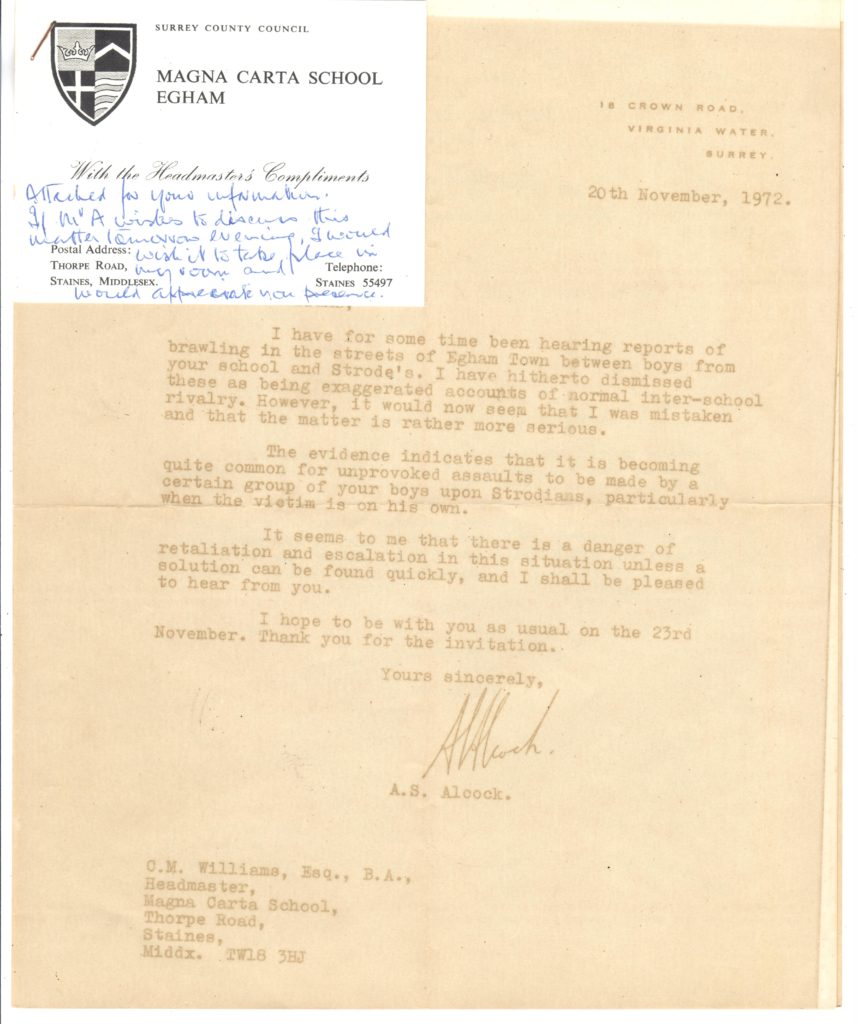Work Experience at Egham Museum
My name is Carys and I have spent a day doing work experience at Egham Museum.
I began my day at 10am where I was given a tour of the museum. I started my museum work by sorting out a display which I will help take down tomorrow. It was a display concerning the Queen’s Platinum Jubilee, where people could write down an experience they had to do with the jubilee like a party. It also had a few images and a timeline of the Queen’s life. This display had been running since March so needed to be taken down soon as the jubilee is now over. I then began some design work and designed a poster giving information about the museum’s most recent achievements, some of these included showing a class of year three’s the museum and receiving some very positive comments, and also some praise of some of the most recent exhibitions. This was an interesting challenge for me as I had never been asked to design something from scratch like that before. However, with the necessary guidance I could complete the task.
After finishing that I was set a very hands on task. I was given a catalogue that had lots of documents relating to schools in the local area. The two schools I decided to focus on were The Magna Carta School (the one I currently attend and am in Year 10) and St Jude’s School (my previous Junior school). I chose these two as they are very personal to me and would therefore find the history more interesting and relevant. One of the documents that I found most interesting was DOC2061 which contained a series of letters between C.M. Williams who is the headmaster of Magna Carta school at the time (1972) and A.S. Alcock. The first letter is written by Mr Alcock complaining about several fights between boys from Magna Carta School and Strode’s college, he describes the fights as “unprovoked assaults” by a “certain group of boys” from Magna Carta and expresses his fears that there is “a danger of retaliation and escalation in this situation unless a solution can be found quickly”.

This first letter sets the scene for this situation, and paints this group of boys from Magna Carta as bullies picking on students and causing harm to them. However, if you read the second letter which is a response from Headmaster Williams he provides a different perspective on this story. He begins the letter criticising Mrs Alcock’s previous letter. He questions Mr Alcock’s source and claims his opinion to be biased. He also assures Mr Alcock that he is aware of these altercations and refers to them as “differences” suggesting that they are not very serious and just pesky arguments the complete opposite of what Mr Alcock previously said. He also contradicts him yet again by claiming that “that most of these have been provoked by one side or another” showing that the attacks are not cold hearted cruelty but simple arguments between boys. Headmaster Williams then finishes his letter with that “blame should not be attributed (as you seem to believe) to the boys of this school”. He defends his students and also criticises Mr Alcock for jumping to conclusions so quickly with evidence that does not appear to have been proved. As a historian we are now faced with a dilemma, both men appear to be quite sure that they are correct so who do you believe. I personally believe Headmaster Williams, he obviously is the headmaster of the school so knows his students and most likely is more aware of the situation. Mr Alcock appears to have just heard a rumor of these attacks and I’m sure he’s trying to help by informing the headmaster. It is so interesting how two simple letters can tell us a whole story and share a hidden part of history.
Work experience students at Egham Museum are encouraged to explore a wide range of activities which take place in a small local history museum. Tasks might include collections care, exhibition installation or deinstallation, research, design or social media production depending on the time of year and student’s skills and interests.
In this case Carys was also able to engage with primary sources and begin to use skills developed in the classroom to understand more about what different perspectives and biases are at play.
In addition to offering work experience placements, the museum encourages young people to join the volunteer team in school holidays. More information can be found on the volunteering section of our website or by clicking here.

